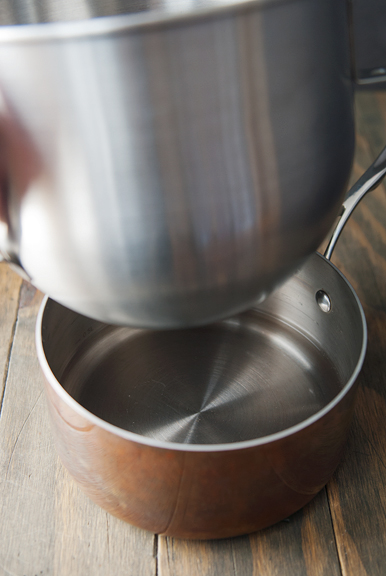technique: sous vide tempering chocolate
Wednesday, May 10th, 2017 Technique: sous vide tempering chocolate
Technique: sous vide tempering chocolate
Spring in Colorado is that lovely fickle season that throws it all at you – snow, rain, sun, fog, hail. That means flexibility is key to getting outside for some adventure and exercise. In our house, we keep four bins of gear at the ready in our living room. During winter months, the bins are: resort skiing, backcountry skiing/touring, skate skiing, classic skiing. In summer, the bin contents are swapped out for hiking, biking, trail running, and paddling gear. But spring means it’s all a slightly organized mess, a mish mash of late skiing and early running gear co-mingling in a way that mimics the snow and the trails in the backcountry right now.
jeremy skiing in rocky mountain national park

it wasn’t great snow, but right now we’ll just take any snow

après ski visit to trail ridge road

riding in boulder with a nice view of the flatirons

no matter the weather, neva always gets her fetch session

I had planned to get this post up some time Monday after reporting for jury duty in the morning, but against many odds, I was selected for a 2-week trial. Yay?! I’ve been called for jury duty once before about 16 years ago and got selected for a trial then, too. And while I am always hoping to NOT be selected for a jury (somehow I’m batting 0), I will say that it is something many citizens should experience at least once to see the workings, the flaws, and the positive aspects at a local level. Not to mention, the jury selection process alone gives one a rare cross-sectional glimpse into our community. You learn things about people. And if we can’t relate to people, then where does that leave us?
Mother’s Day is this Sunday, and instead of sharing a recipe, I’m sharing a technique with you. Tempering chocolate comes in handy when candymaking or creating edible decorations or dipping things like fruit or cookies. Tempered chocolate results in a more stable chocolate coating that is shiny and has a lovely snap. It is definitely more effort than simply melting chocolate, but for me, the final product is far superior. I’ve shown how I temper chocolate on a number of recipes on this blog (I use the seed method). However, once the chocolate is in temper, it’s really hard for me to maintain the tiny temperature range where it remains in temper – particularly for small batches of a pound or less. After borrowing my friend’s sous vide, I began to look into using it for tempering. I read through Kenji’s overview of chocolate tempering on The Food Lab and decided against the sous vide method. He tempers his chocolate in a sealed pouch which isn’t helpful when I want to dip a lot of things into tempered chocolate. But tempering the chocolate is not the hard part. The challenge lies in keeping the chocolate at a constant temperature so it remains in temper. That’s actually where the sous vide cooker is the perfect solution.
let’s say you want to dip some strawberries in tempered chocolate

There are basically three, maybe four kinds of chocolate: dark chocolate, milk chocolate, white chocolate, and caramelized white chocolate. I haven’t worked with caramelized white chocolate, but one of my clients uses it in her confections. I typically work with dark chocolate, will occasionally temper white chocolate, and very rarely milk chocolate. A warning about white chocolate: don’t use a white chocolate that contains palm kernel oil or coconut oil because it will not temper (it separates and becomes useless). You need to use proper white chocolate that has real cocoa butter, which means it’s going to cost you some money.
you will need chocolate – try to use a good quality chocolate

So let’s temper some dark chocolate using the seed method. The reason I use the seed method is because it’s the one I learned in my pastry skills course a decade ago, and I have enjoyed a high success rate using it. Melt most of your chips, féves, or chopped chocolate (reserve some for seeding) in a bowl over a water bath’s gentle heat until it reaches a nominal temperature, which you are measuring with a thermometer. Yes, use a thermometer. It’s important not to let a single drop of water (including condensation from steam) touch the chocolate because it can seize and you won’t be able to salvage it for tempering. If it does seize, don’t throw that chocolate away! You can still use it in baking and such, just not tempering. In the case of dark chocolate, I try to target 118-120°F as the maximum. Because there is some heat capacity in the body of melted chocolate and the bowl, I find when the temperature reaches 112°F, I can remove the bowl from the water bath and it will continue to rise in temperature to about 118-120°F as I set the bowl on an ice pack or in an ice bath to cool. For milk and white chocolates, your target temperature is a few degrees cooler: 116-118°F, so I would remove the chocolate from the water bath around 110°F.
place most, but not all, of your chocolate in a heatproof bowl

set the bowl over a simmering water bath

cool the chocolate on an ice pack or in an ice bath

**Jump for more butter**





















